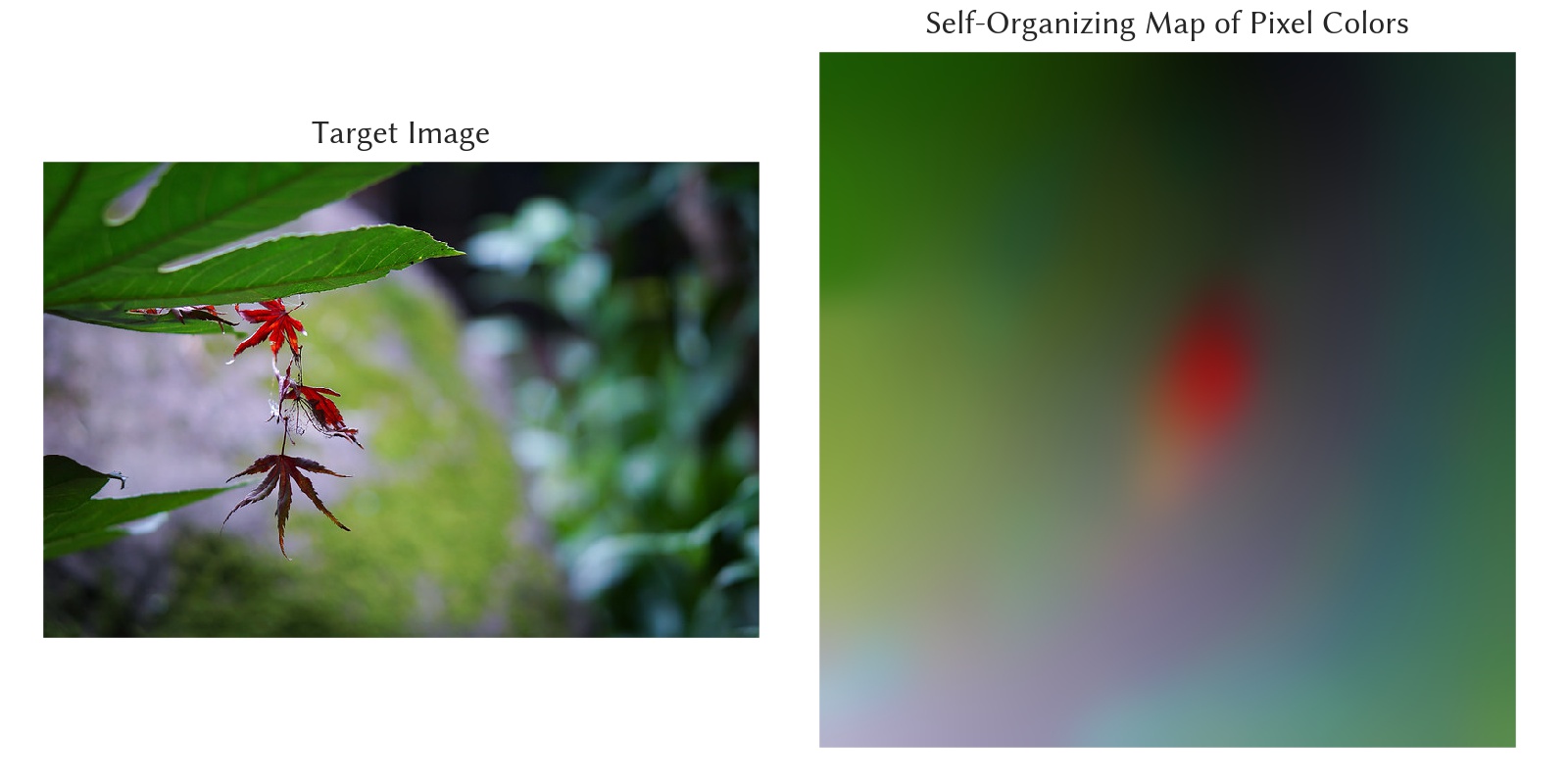som
Self-organizing map (SOM) for dimensionality reduction and low-dimensional embedding. This technique is useful for understanding high-dimensional data via visualization.
Header
#include <mathtoolbox/som.hpp>
Internal Dependencies
Math
Terms
In this library, the following terms are used:
- Data space: The space that the data points exist. It is typically high-dimensional.
- Latent space: The space that the map is constructed. It is typically (and in this library restricted to) one- or two-dimensional.
- Node: The element of the map. It has fixed coordinates in the latent space and also has coordinates in the data space that will be learned by the SOM algorithm.
Update
This library implements a batch-style SOM algorithm rather than online-style ones. That is, for each update step, all the data points are handled equally and contribute to the update of the node coordinates simultaneously.
Let be the data matrix (each column represents a data point) and be the map matrix (each column represents coordinates of a node). The batch-style update is written as
See the source code for the definitions of , , and .
Neighborhood Function
This library uses a Gaussian function with a decreasing variance:
where is the iteration count, is a user-specified parameter for controlling the speed of decrease, and and are user-specified initial and minimum variances, respectively.
Data Normalization
This library offers an option to perform data normalization, which is recommended to use in general.
Examples
The following is an example of applying the algorithm to the pixel RGB values of a target image and learning its 2D color manifold.

The above map was generated through 30 iterations. The learning process is visualized as below.
Self-organizing map is often assumed to be two-dimensional, but it is also possible to use other dimensionalities for the latent space. The below is an example of learning a one-dimensional map.

Useful Resources
- Chuong H. Nguyen, Tobias Ritschel, and Hans-Peter Seidel. 2015. Data-Driven Color Manifolds. ACM Trans. Graph. 34, 2, 20:1--20:9 (March 2015). DOI: https://doi.org/10.1145/2699645